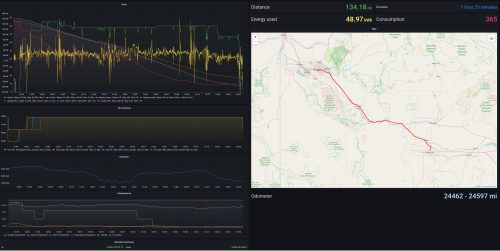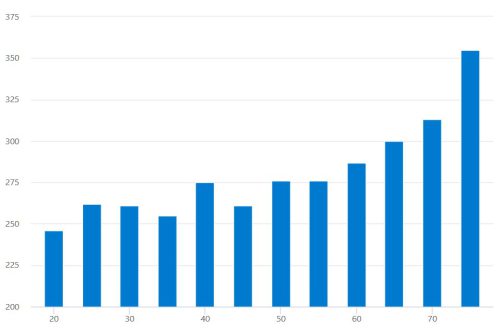Welcome to another Tesla Tuesday!
We recently put 2500 miles on our Tesla Model Y and the road trip was a great experience. However, there was one stretch where I had some range anxiety for the first time. We left Twin Falls, ID with 82% charge which should have been enough to get us into Meridian, ID with 25% remaining. However, as we set out, our range was decreasing rapidly, and I was predicting that we’d get there with around 10-15% remaining. That’s still plenty of buffer, but it was disconcerting. I say this not to scare anyone off of EV’s but to make sure I’m not all roses and butterflies when I talk about driving one. I haven’t been able to figure out exactly what happened, but I suspect a combination of the following based on the minute-by-minute data that was logged from the car.
- It was HOT. Temperatures were between 99 and 104 on that stretch of the trip. HVAC can consume quite a bit of battery when it’s that hot.
- The speed limit was 80mph and I had the cruise set at 85mph. More on speed’s impact on efficiency later.
- We were driving into a headwind.
- Traffic was heavy-ish so there was a lot of slowing down and speeding up.
I expect the car’s estimation to take all these things into account, but something was definitely off. About 5 miles out from the supercharger in Boise, we spotted a Tesla with lights flashing going about 60mph trying to conserve energy and I assume they hit the same issue but didn’t notice it soon enough. My guess is that our trips were flagged by the engineers at Tesla and hopefully our experience will help improve their estimation models.
For my part, I decided early on to back off my speed and set the cruise at 78mph. This felt about as slow as I could go without being an annoying rock in the stream. That quickly helped to stabilize the estimate. Click on the link below to see all the charts from this stretch of the trip.
We made it with no trouble, but it was the first time that I had thought about what would happen if we didn’t make it. Some stretches of these roads also had signs about “no gas for X miles” but it’s easier to bring a gas can to your car than it is to bring your car to a charger.
I do think it’s interesting how much easier it is to calculate the exact impact of driving at different speeds and heats. When we cruise at 85mph, we were using 360-380 watts per mile but when we cruise at 65 it’s more like 250-270 watts per mile. That’s a ~40% increase in energy usage for an extra 20mph. This same thing happens in a gas-powered car too, but with a bigger tank and less data, you don’t always notice it as easily.
While TeslaMate does show me average efficiency by temperature, it doesn’t have a dashboard for efficiency by speed. It’s tricky to calculate because of all the various factors at play (temperature, elevation, traffic impact, driving style, etc), but if we take a naive approach and look at average efficiency in kWh based on average speed in mph for an entire trip segment, it looks like the chart below. Take this with a grain of salt because as I mentioned, this is a very rough estimate. I would expect an exponentially increasing line. Below about 35mph, there’s not a lot of data since I only used trips of at least 20 miles and I don’t often drive that far that slowly.
With a gas car, your efficiency peaks around 45mph and at slow speeds, you waste a lot of extra energy, but with an electric car, you can go almost as slow as you want and keep using less energy. However, at high speeds, they act similarly: drag increases with the square of speed. Driving a car with a very low coefficient of drag does help, you’re still bound by the laws of physics.


